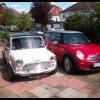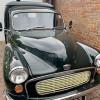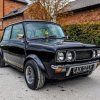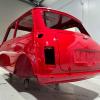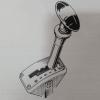It seems I am not the only driver who thinks modern LED headlights are making night driving on unlit roads something I now avoid when possible....
A glaring problem.
"The RAC is calling on the Government to commission an independent study into the issue of headlight glare after new research found 85% of those affected believe the problem is getting worse. An RAC survey of 2,000 drivers found a huge nine-in-10 (89%) think at least some headlights on cars on the road today are too bright, of which three-in-10 (28%) – a higher proportion than ever – think most are. Of the all these drivers who complain about the brightness of car headlights, some 91% say they get dazzled when driving with three-quarters (74%) saying this happens regularly.
When it comes to the effects of glare on drivers, two-in-three (67%) who suffer say they have to slow down considerably until they can see clearly again, while a similar proportion (64%) believe some headlights are so bright they risk causing accidents.
In fact, five per cent of these drivers state they have nearly been involved in a collision themselves. Alarmingly, nearly one-in-10 (7%) say they find headlight glare so bad that they avoid driving at night altogether, a figure that rises to 14% for drivers aged 65 and over.
While the RAC has been surveying drivers on dazzling headlights since 2018, these new findings show more drivers than ever appear to be suffering from them, with 85% of those affected stating they believe the problem is getting worse.
As part of its study, the RAC asked drivers to estimate how long it takes them to see clearly again after getting dazzled by other drivers’ lights. While 68% say it takes between one and five seconds, one-in-10 (11%) say it takes six or more – which, staggeringly, is enough for a driver travelling at 60mph to cover 160 metres, the equivalent of 40 car lengths.
The reasons drivers perceive headlight glare to be such an issue are less clear, although an overwhelming 87% of dazzled drivers think it is mainly due to the fact some lights just appear much brighter. This could be as a result of the increasing prevalence of cars fitted with LED headlights, leading to a much more intense and focused beam that the human eye reacts differently to, compared to a conventional ‘yellower’ halogen bulb. While LED headlights are great for improving a driver’s view of the road ahead, this can be to the detriment of other road users who encounter them.
Headlamp aim consistently tops the MOT compliance survey as one of the most likely items to be assessed incorrectly by testers. The increasing popularity of cars that sit higher on the road, especially SUVs, may also be a factor with those in conventional cars such as hatchbacks, saloons or estates suffering the most. Older drivers are likely to be disproportionately affected by headlight glare, so may be more likely to experience difficulties or to decide not to drive at night at all."
More here:-
https://www.rac.co.u...eadlight-glare/


